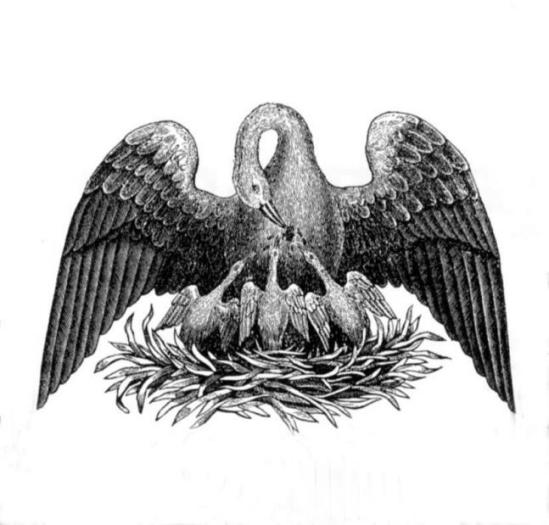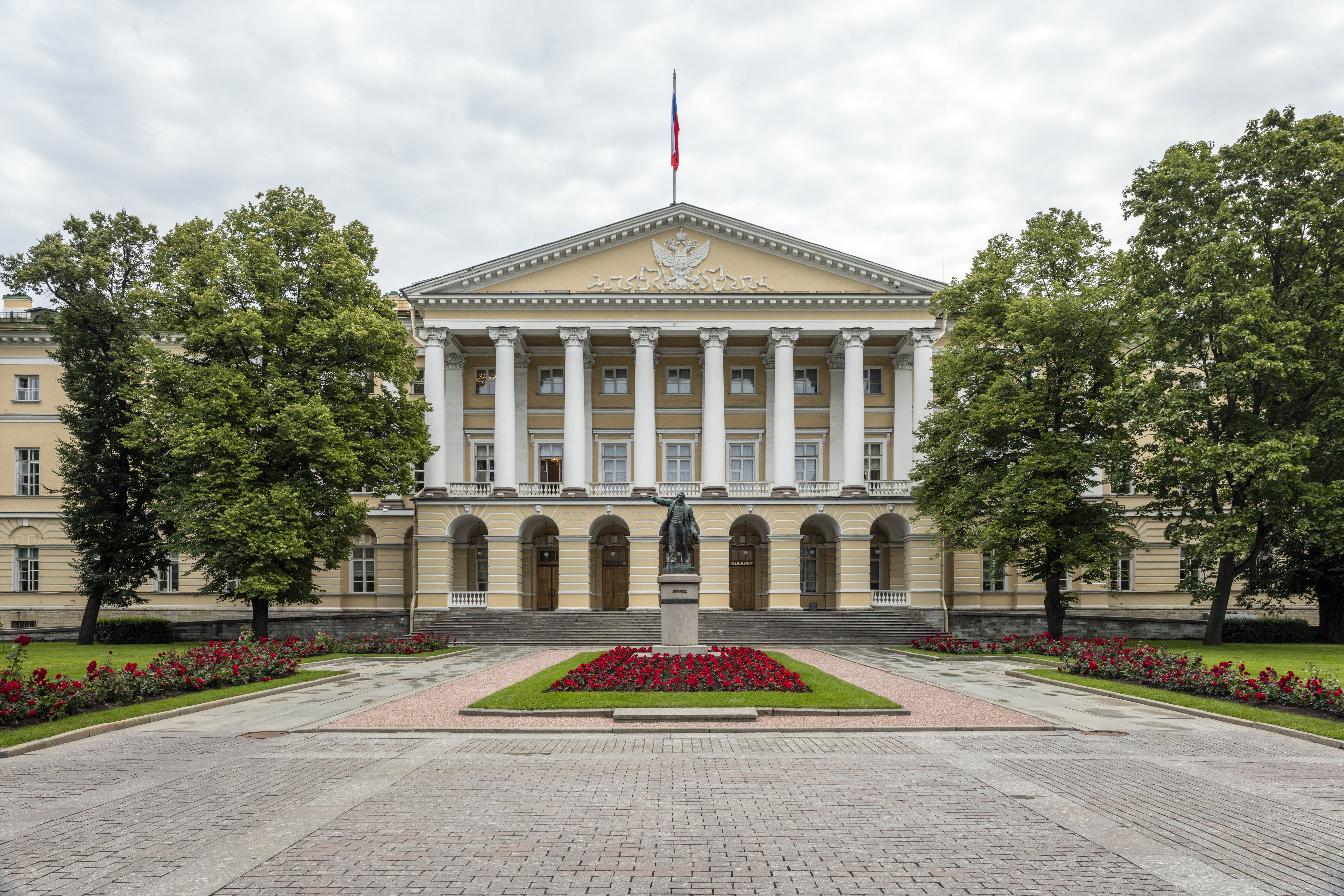|
Office Of The Institutions Of Empress Maria
The Office of the Institutions of Empress Maria (russian: Ведомство учреждений императрицы Марии) was the name of the Imperial government office of charity in Imperial Russia, and the 4th branch of His Imperial Majesty's Own Chancellery between 1828 and 1917. The office was named after Empress Maria, who united her management of the Moscow Orphanage with that of the orphanage and the Foundling Hospital of St. Petersburg on 2 May 1797. The institutions managed orphanages, care of the invalids, the blind and the deaf, education for women and children, poor houses and hospitals, many of the institutions founded by the Empress. After Empress Maria's death in 1828, it was incorporated into the Imperial Chancellery of the Tsar and given the name ''Office of the Institutions of Empress Maria'' in 1854. In 1880 it was renamed to ''His Imperial Majesty's Own Chancellery for Institutions of Empress Mary''. The office was abolished in 1917, the year when ... [...More Info...] [...Related Items...] OR: [Wikipedia] [Google] [Baidu] |
Imperial Russia
The Russian Empire was an empire and the final period of the List of Russian monarchs, Russian monarchy from 1721 to 1917, ruling across large parts of Eurasia. It succeeded the Tsardom of Russia following the Treaty of Nystad, which ended the Great Northern War. The rise of the Russian Empire coincided with the decline of neighbouring rival powers: the Swedish Empire, the Polish–Lithuanian Commonwealth, Qajar Iran, the Ottoman Empire, and Qing dynasty, Qing China. It also held colonies in North America between 1799 and 1867. Covering an area of approximately , it remains the list of largest empires, third-largest empire in history, surpassed only by the British Empire and the Mongol Empire; it ruled over a population of 125.6 million people per the Russian Empire Census, 1897 Russian census, which was the only census carried out during the entire imperial period. Owing to its geographic extent across three continents at its peak, it featured great ethnic, linguistic, re ... [...More Info...] [...Related Items...] OR: [Wikipedia] [Google] [Baidu] |
His Imperial Majesty's Own Chancellery
His Imperial Majesty's Own Chancery or H.I.M. Own Chancery () began as personal chancery of Paul I and grew into a kind of regent's office, run by Count Arakcheyev from 1815 and until the death of Alexander I of Russia. Under Nicholas I, the Chancery was transformed into a large administrative body, on par with the Committee of Ministers and the Governing Senate. Since 1826, the Chancery was divided into several sections ( sl. otdeleniye): *First Section – preparation of the Majestic Decrees and Orders, control over its execution, gubernatorial and ministerial reports, petitions to the Sovereign, state service and its awards and decorations. It was run by Stats-Secretary of His Majesty. *Second Section – codification of the Imperial Legislation, publication of the codes. Mikhail Speransky was the first head of the Section. *Third Section – political crimes, censorship, religious sects, aliens, Gendarmes, headed by General Benckendorf, who had been commander of the Guards u ... [...More Info...] [...Related Items...] OR: [Wikipedia] [Google] [Baidu] |
Maria Feodorovna (Sophie Dorothea Of Württemberg)
Maria Feodorovna (russian: Мария Фёдоровна; née Duchess Sophie Dorothea of Württemberg; 25 October 1759 – 5 November 1828 S 24 October became Empress consort of Russia as the second wife of Emperor Paul I. She founded the Office of the Institutions of Empress Maria. Daughter of Duke Frederick Eugene of Württemberg and Princess Friederike of Brandenburg-Schwedt, Sophie Dorothea belonged to a junior branch of the House of Württemberg and grew up in Montbéliard, receiving an excellent education for her time. After Grand Duke Paul (the future Paul I of Russia) became a widower in 1776, King Frederick II of Prussia (Sophie Dorothea's maternal great-uncle) and Empress Catherine II of Russia chose Sophie Dorothea as the ideal candidate to become Paul's second wife. In spite of her fiancé's difficult character, she developed a long, peaceful relationship with Paul and converted to the Russian Orthodox Church in 1776, adopting the name ''Maria Feodorovna''. During ... [...More Info...] [...Related Items...] OR: [Wikipedia] [Google] [Baidu] |
Moscow Orphanage
The Moscow Orphanage or Foundling Home (russian: Воспитательный дом в Москве) was an ambitious project conceived by Catherine II of Russia, Catherine the Great and Ivan Betskoy, in the early 1760s. This idealistic experiment of the Age of Enlightenment was intended to manufacture "ideal citizens" for the Russian state by bringing up thousands of abandoned children to a very high standard of refinement, cultivation, and professional qualifications. Despite more than adequate staffing and financing, the Orphanage was plagued by high infant mortality and ultimately failed as a social institution. The main building, one of the earliest and largest Neoclassical structures in the city, occupies a large portion of Moskvoretskaya Embankment between the Kremlin and Yauza River, boasting a 379-metre frontage on Moskva River. The complex was built in three stages over two centuries, from Karl Blank's master plan (1767) to its complete implementation in the 1940s. Toda ... [...More Info...] [...Related Items...] OR: [Wikipedia] [Google] [Baidu] |
Russian Revolution
The Russian Revolution was a period of Political revolution (Trotskyism), political and social revolution that took place in the former Russian Empire which began during the First World War. This period saw Russia abolish its monarchy and adopt a socialist form of government following two successive revolutions and a bloody civil war. The Russian Revolution can also be seen as the precursor for the other European revolutions that occurred during or in the aftermath of WWI, such as the German Revolution of 1918–1919, German Revolution of 1918. The Russian Revolution was inaugurated with the February Revolution in 1917. This first revolt focused in and around the then-capital Petrograd (now Saint Petersburg). After major military losses during the war, the Russian Army had begun to mutiny. Army leaders and high ranking officials were convinced that if Nicholas II of Russia, Tsar Nicholas II abdicated, the domestic unrest would subside. Nicholas agreed and stepped down, usher ... [...More Info...] [...Related Items...] OR: [Wikipedia] [Google] [Baidu] |
Smolny Institute Of Noble Maidens
The Smolny Institute of Noble Maidens of Saint Petersburg (Russian: Смольный институт благородных девиц Санкт-Петербурга) was the first women's educational institution in Russia that laid the foundation for women's education in the country. It was Europe's first public educational institution for girls. History Institute under Catherine the Second It was originally called the Imperial Educational Society of Noble Maidens. It was founded on the initiative of Ivan Betskoy and in accordance with a decree signed by Catherine the Second on May 16, 1764. This society, as stated in the decree, was created in order to "give the state educated women, good mothers, useful members of the family and society". The name Smolny comes from the Smolny Palace, built in 1729 by Peter I near the village of Smolny, in which there was a tar factory. Catherine, a fan of the progressive ideas of Montaigne, Locke and Fenelon, wanted to establish an educat ... [...More Info...] [...Related Items...] OR: [Wikipedia] [Google] [Baidu] |
Grigory Ivanovich Villamov
Grigory Ivanovich Villamov (russian: link=no, Григорий Иванович Вилламов; 8 January 1773 – 7 February 1842) was the Secretary of State for the IV department of His Imperial Majesty's Own Chancellery, member of the State Council and Active Privy Councillor under Alexander I and Nicholas I. References Sources * Brockhaus and Efron Encyclopedic Dictionary The ''Brockhaus and Efron Encyclopaedic Dictionary'' (Russian: Энциклопедический словарь Брокгауза и Ефрона, abbr. ЭСБЕ, tr. ; 35 volumes, small; 86 volumes, large) is a comprehensive multi-volume ...: in 86 volumes (82 volumes and 4 additional). – Saint Petersburg, 1890–1907. External links * Willamov Grigory Ivanovich 1773 births 1842 deaths Members of the State Council (Russian Empire) Recipients of the Order of St. Anna, 1st class Recipients of the Order of St. Vladimir, 1st class Recipients of the Order of St. Vladimir, 2nd class [...More Info...] [...Related Items...] OR: [Wikipedia] [Google] [Baidu] |
Nicholas I Of Russia
Nicholas I , group=pron ( – ) was List of Russian rulers, Emperor of Russia, Congress Poland, King of Congress Poland and Grand Duke of Finland. He was the third son of Paul I of Russia, Paul I and younger brother of his predecessor, Alexander I of Russia, Alexander I. Nicholas inherited his brother's throne despite the failed Decembrist revolt against him. He is mainly remembered in history as a reactionary whose controversial reign was marked by geographical expansion, economic growth, and massive industrialisation on the one hand, and centralisation of administrative policies and repression of dissent on the other. Nicholas had a happy marriage that produced a large family; all of their seven children survived childhood. Nicholas's biographer Nicholas V. Riasanovsky said that he displayed determination, singleness of purpose, and an iron will, along with a powerful sense of duty and a dedication to very hard work. He saw himself as a soldier—a junior officer totally consumed ... [...More Info...] [...Related Items...] OR: [Wikipedia] [Google] [Baidu] |
Institute For Noble Maidens
An Institute for Noble Maidens () was a type of educational institution and finishing school in late Imperial Russia. It was devised by Ivan Betskoy as a female-only institution for girls of noble origin. Those were "Closed female institutes of the Office of the Institutions of Empress Maria". The first and most famous of these was the Smolny Institute of Noble Maidens in St. Petersburg. History Origins Secondary education for girls and a path to university education for women was extremely limited in Tsarist Russia. One path of educational training for the daughters of the Russian nobility were the Institutes for Noble Maidens ''(Instituti blagorodnykh devits),'' cloistered private academies which housed primary and secondary students and offered basic scholastic and cultural training. The idea of the Institute for Noble Maidens dated to 1763, when Ivan Betskoy to Empress Catherine the Great a "Statute for the Education of the Youth of Both Sexes," which proposed the education ... [...More Info...] [...Related Items...] OR: [Wikipedia] [Google] [Baidu] |
Patriotic Society (Russia)
{{Expand Russian, Патриотическое общество, date=May 2014 The Patriotic Society (Russian: Патриотическое общество) was a charity organisation for women, active in Russia from 1812 to 1917. It was the first and most notable women's organisation in Imperial Russia The Russian Empire was an empire and the final period of the List of Russian monarchs, Russian monarchy from 1721 to 1917, ruling across large parts of Eurasia. It succeeded the Tsardom of Russia following the Treaty of Nystad, which ended th .... References * Справочная книжка об учреждениях Женского патриотического общества. Петроград, 1915. Charities based in Russia Social welfare charities 1812 establishments in the Russian Empire 1917 disestablishments in Russia ... [...More Info...] [...Related Items...] OR: [Wikipedia] [Google] [Baidu] |
Charities Based In Russia
A charitable organization or charity is an organization whose primary objectives are philanthropy and social well-being (e.g. educational, religious or other activities serving the public interest or common good). The legal definition of a charitable organization (and of charity) varies between countries and in some instances regions of the country. The regulation, the tax treatment, and the way in which charity law affects charitable organizations also vary. Charitable organizations may not use any of their funds to profit individual persons or entities. (However, some charitable organizations have come under scrutiny for spending a disproportionate amount of their income to pay the salaries of their leadership). Financial figures (e.g. tax refund, revenue from fundraising, revenue from sale of goods and services or revenue from investment) are indicators to assess the financial sustainability of a charity, especially to charity evaluators. This information can impact a chari ... [...More Info...] [...Related Items...] OR: [Wikipedia] [Google] [Baidu] |







